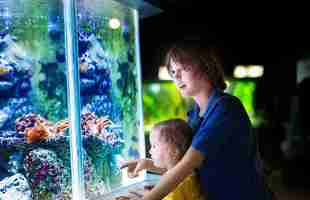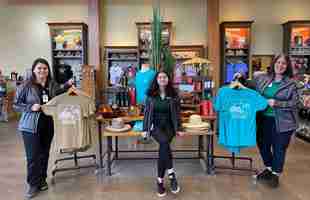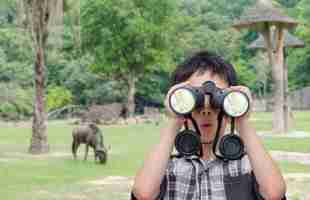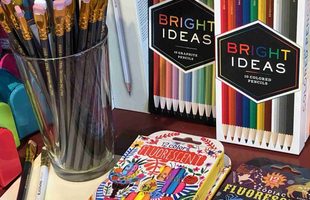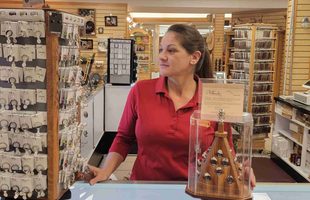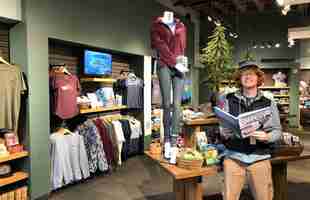The 230,000-gallon shark gallery and a 170-foot “sea tube” are the last exhibits guests see before entering the gift shop at Greater Cleveland Aquarium. So it’s no surprise that once inside, shoppers gravitate toward shark tooth jewelry. “It’s a winner with all age groups, particularly the bracelets and the single tooth necklace,” said Aquarium General Manager Stephanie White.
Likewise, the aquarium’s stingray touch pool is very popular. As a result, another best-selling category is stingray jewelry, which range from rope bracelets with silver stingrays to crystal pendant necklaces.
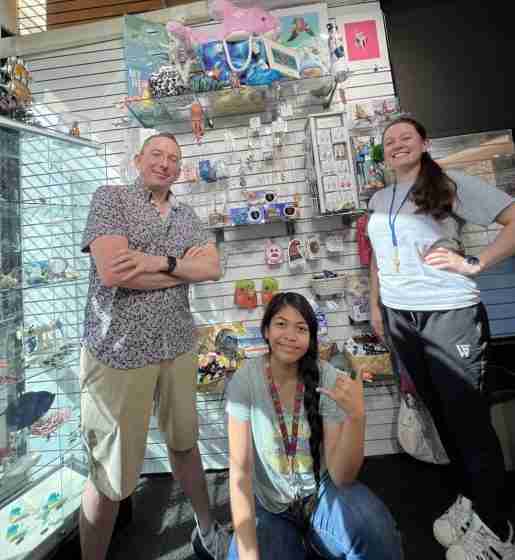 Matt Hiller, store manager, Waikiki Aquarium in Honolulu, Hawaii, photographed with Assistants Dacyleen Amond and Rachel Goodman. Price point is key at the 600-square-foot store, and Hiller said the shop does not do much selling of merchandise in the over-$25 range.
Matt Hiller, store manager, Waikiki Aquarium in Honolulu, Hawaii, photographed with Assistants Dacyleen Amond and Rachel Goodman. Price point is key at the 600-square-foot store, and Hiller said the shop does not do much selling of merchandise in the over-$25 range.While specific and buying decisions are made by Event Network, which operates the gift shop, White said the Coral Cove Gift Shop profits with jewelry that ties into aquarium displays. “Many purchase decisions are made because the items connect guests emotionally to their experience here,” she explained.
That connection extends to the aquarium’s conservation mission. Gift shop employees engage shoppers with the stories behind the jewelry — like the trees that are planted when people purchase 1 Tree Mission beaded bracelets, or the ocean trash removal project funded by the sales of Dorsal turtle wrap bracelets. “Our team shares that information, so guests can be inspired by items that match their priorities,” White explained.
A similar dynamic motivates shoppers at the Seattle Aquarium. Assistant Store Director Sarah Nguyen said many of the accessories align with the aquarium’s mission, like handcrafted artisan jewelry that provides sustainable employment for a community. “Among our top selling items are those responsibly made charm bracelets,” said Nguyen, who added that each purchase also benefits environmental conservation efforts. “They come in different styles and colors, so you can celebrate your individual style along with your favorite marine animal.”
Shoppers respond positively to products that marine conservation. “People like that our choices are guided by values,” said Nguyen. But visibility also boosts sales: There’s a jewelry display at the front counter, along with a spin rack in an open section of the store “where everybody can see it,” the manager added.
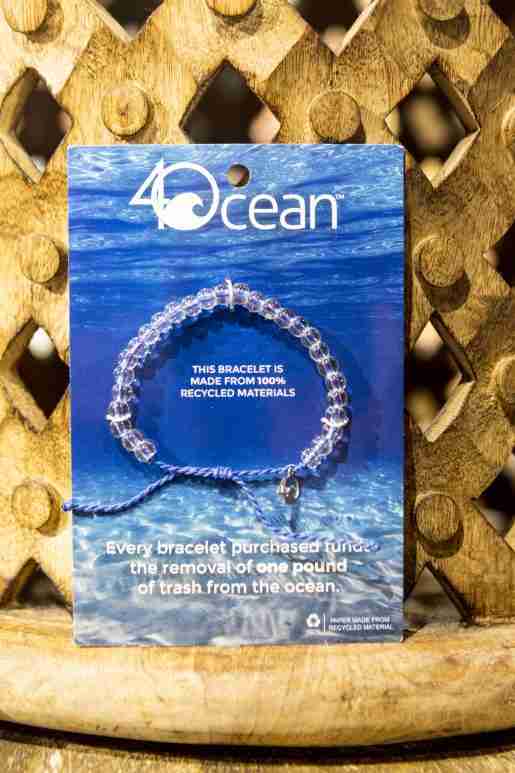 Bracelets made from 100% recycled materials are part of the merchandise selection at the John Shedd Aquarium. Photo credit: Shedd Aquarium.
Bracelets made from 100% recycled materials are part of the merchandise selection at the John Shedd Aquarium. Photo credit: Shedd Aquarium.Melissa Million, store director at the Shedd Aquarium gift shop in Chicago, has clear ideas about which kind of displays sell more jewelry. She favors strategic lighting so pieces sparkle and shine, drawing customers to take a closer look. She’ll arrange multiple pieces of jewelry on mannequins, such as the popular puka shell and faux leather pieces, or so-called mood and friendship necklaces that are favorites with shoppers.
“Seeing different combinations encourages guests to play with styling and purchase a wider range of jewelry that shows off their passion for sea life,” Million explained. She noted that many of the items support conservation efforts like coral reef restoration and ocean plastic removal. “I like to merchandise items as a set or a collection that goes together, telling a story. Layering designs to create one’s own look is always in fashion; jewelry is about expressing your personal style.”
Careful arrangements allow guests to appreciate each piece, without avoid visually overwhelming them. “Always allow enough space between necklaces to avoid entanglements, especially when guests may be comparing items on side by side pegs,” Million advised.
Jewelry is the best-selling category at many aquarium gift shops, like the Florida Aquarium gift shop in Tampa. “A lot of people just walk in and they know they want jewelry as a souvenir or a gift,” said Manager Melanie Tejeda. Dainty styles, many beaded or featuring seashells, are popular at the store; nearly all the jewelry comes from the Element line. Dolphin and turtle motifs and “summery, Florida colors” like yellow, blue and pink are a hit with Tampa visitors. “We don’t really have to do too much to promote our jewelry — it just sells itself,” Tejeda reflected.
Local, tropical motifs are also winners at the Waikiki Aquarium, on the campus of Honolulu’s University of Hawaii, Manoa. “Periwinkle is a national brand with a great selection of marine stuff — shells, pearls, octopus,” said Store Manager Matt Hiller. His team maximizes sales with two large eye level spinners to the left of the register, with racks of necklaces, bracelets and rings in the middle.
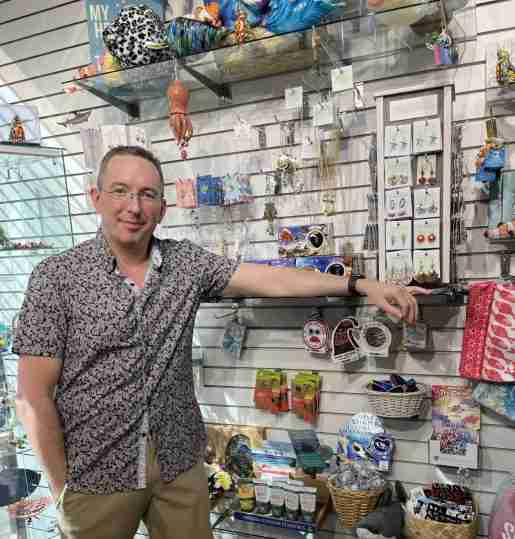 Matt Hiller, store manager, Waikiki Aquarium, Honolulu, HI. Necklaces, bracelets and rings from the brand Periwinkle sell well for the shop.
Matt Hiller, store manager, Waikiki Aquarium, Honolulu, HI. Necklaces, bracelets and rings from the brand Periwinkle sell well for the shop.Waikiki Aquarium’s other best-selling brand, Leighton Lam, features Hawaii-inspired designs with turtles, pineapples, dolphins, and starfish. Some of the 36 styles feature Hawaiian floral motifs and the island’s signature pearls; nearly all pieces are between $14-$18.
Price point is key at the 600-square-foot store. “We don’t do much in the over $25 range,” Hiller said. “I’ve found that for souvenirs, people tend to want something on the cheaper end.” As supply chain disruptions have made getting inventory more difficult, Hiller has been relying on inexpensive wholesalers like Barry Owen and World End Imports, which he expects to see the store into 2022. “I’ve been getting a lot of cheaper stuff that I can get a lot of quickly, and that offer good margins,” Hiller said.
